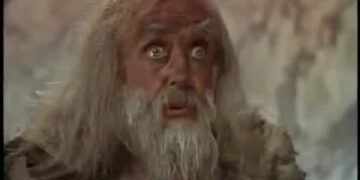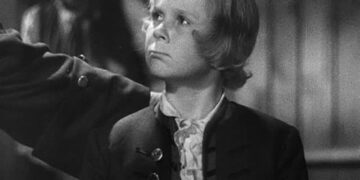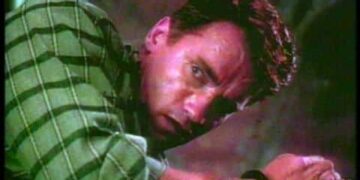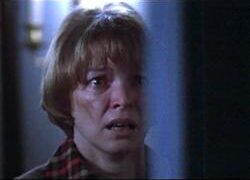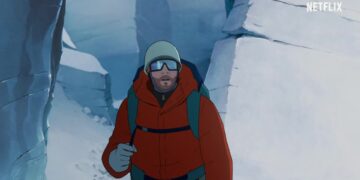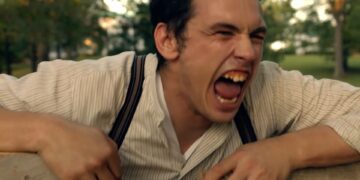When I first laid eyes on Robert Altman’s ‘McCabe & Mrs. Miller,’ it was as if I’d been transported straight into the intricate tapestry of the early 20th-century frontier. This film, a revisionist Western, is much more than a tale of enterprise and romance in the Pacific Northwest; it’s a veritable fashion time capsule. The sartorial elegance of this 1971 masterpiece is not merely a visual treat; it’s a narrative tool, a character unto itself, setting moods and defining personas with every thread and texture. The wardrobe, designed by the visionary Leon Erickson, does more than clothe the actors; it weaves a story of its own, through the frosted breath of the characters and the muddy streets they tread.
Immersing myself in the cinematic realm of ‘McCabe & Mrs. Miller,’ I was captivated by the textured layers of clothing that spoke of the characters’ resilience and the ruggedness of their environment. The film’s aesthetic is a blend of historical accuracy and artistic license, resulting in a richly authentic yet stylized panache that has influenced both cinema and fashion for decades. In this deep dive, I’ll unravel the threads of this stylish film, dissecting the sartorial splendor of its characters, and exploring how you, my fellow fashion aficionados, can infuse your wardrobe with a dash of ‘McCabe & Mrs. Miller’ flair.
Overview of ‘McCabe & Mrs. Miller (1971)’ Aesthetic
The aesthetic of ‘McCabe & Mrs. Miller’ is one of deliberate imperfection, mirroring the raw and unpolished spirit of the burgeoning town of Presbyterian Church. The costumes are a patchwork of textures and earthy tones that blend seamlessly with Vilmos Zsigmond’s groundbreaking cinematography—a soft-focus, sepia-tinted view that makes every frame a Renaissance painting come to life. The clothing is not just worn; it’s lived in, telling tales of long, arduous journeys and lives etched with hardship and hope.
- Harmony with Nature: The film’s characters are draped in furs, leathers, and heavy wools that speak of a life in communion with the unforgiving wilderness. Their attire is one with the landscape, a palette of browns, greens, and grays that camouflage them against the backdrop of the rugged mountains and the wooden facades of their dwellings.
- Functional Fashion: Every garment in the film serves a purpose, from the wide-brimmed hats shielding the characters from the relentless downpour to the sturdy boots trudging through the snow. This is a world where style is subordinate to survival, yet it achieves an inadvertent aesthetic that is undeniably compelling.
- Textures Tell Tales: The wear and tear on the clothing are as much a part of the character’s stories as the dialogue they speak. Frayed edges, patched-up holes, and layers upon layers create a visual chronicle of the lives they lead.
The ‘McCabe & Mrs. Miller’ aesthetic is a masterclass in storytelling through wardrobe, a reminder that fashion is not just about what we wear, but the stories we tell through the clothes we choose.
Warren Beatty as John McCabe
Warren Beatty’s portrayal of John McCabe is a sartorial symphony of rugged masculinity and nuanced vulnerability. His ensembles are a mix of practicality and the occasional flair that hints at a man trying to carve a place for himself in a world that’s constantly shifting beneath his feet. The style of John McCabe is one that speaks of ambition, with a subtle undercurrent of the desire for legitimacy and respect.
- The Iconic Shearling Coat: Beatty’s shearling coat is the cornerstone of McCabe’s wardrobe. It’s bulky, it’s protective, and yet it carries an air of understated sophistication. The coat, with its fur-lined lapels and cuffs, is more than a barrier against the cold; it’s a statement of McCabe’s aspirations and his self-fashioned identity as a man of influence.
- The Gambler’s Flair: Beneath the coat, McCabe’s attire is a collection of waistcoats, crisp shirts, and a neckerchief—accessories that add a touch of the gambler’s flamboyance to his otherwise utilitarian ensemble. It’s a nod to the complexity of his character, a man who’s both a dreamer and a schemer.
- The Hat: No analysis of McCabe’s style would be complete without mentioning his hat. The broad-brimmed hat is a shield against the elements and a symbol of the Western entrepreneur. In its shape and stature, it speaks of McCabe’s dogged determination to rise above his station.
John McCabe’s style is a rich textural tapestry that reflects his multidimensional character—a man caught between the rugged demands of frontier life and his own aspirations for a more genteel existence.
Julie Christie as Constance Miller
Julie Christie’s Constance Miller is a vision of feminine strength and sophistication amidst the mud-caked streets of Presbyterian Church. Her attire is a striking contrast to the more subdued tones of her male counterparts, a beacon of elegance in a world of grime. Her style is both armor and allure, a complex blend that speaks volumes about her character’s savvy and survival instincts.
- Ethereal Elegance: Constance’s gowns, often adorned with lace and floral patterns, bring a touch of ethereal beauty to the harsh surroundings. Her dresses are not just garments; they are declarations of her refusal to succumb to the dreariness of her environment.
- The Practicality of Layering: Despite the elegance, Constance’s attire is not without practical considerations. Shawls, capes, and layered skirts suggest a woman who’s acutely aware of the need to adapt to the practicalities of frontier life while maintaining her own sense of style.
- The Statement Hat: Constance, too, dons a hat, but hers is of a different breed. It’s adorned with ribbons and feathers, a flourish that crowns her with an air of dignified defiance. The hat is not just a fashion statement; it’s a symbol of her independence and entrepreneurial spirit.
Julie Christie as Constance Miller is a style maven of the old West, her outfits a careful balance between the demands of her environment and the unwavering assertion of her identity as a woman of substance and style.
Rene Auberjonois as Sheehan
Rene Auberjonois’ Sheehan is the quintessential frontier everyman, his clothing a patchwork of pragmatism and weariness. His style is less about making a statement and more about the quiet endurance of a life lived on the margins of a town in flux. Sheehan’s wardrobe is a visual chronicle of a man who’s both a witness to and a participant in the unfolding drama of Presbyterian Church.
- Unassuming Utility: Sheehan’s attire is utilitarian, with heavy fabrics and muted colors that blend into the woodwork of the town he helps build. His clothes are functional, designed to withstand the rigors of daily labor and the unforgiving climate.
- The Everyman’s Hat: Like the other men of the town, Sheehan sports a hat, but his is a more subdued affair—a simple cap that serves its purpose without fanfare. It’s an emblem of his unassuming place in the community, a role that requires no adornment.
- Subtle Layers: The layering of Sheehan’s clothing, while practical, also suggests the layers of his character. Beneath the rough exterior, there’s a depth to Sheehan, an undercurrent of wisdom and resignation that his wardrobe subtly conveys.
Rene Auberjonois as Sheehan presents a style that’s understated yet rich with the textures of a life lived in the shadows of greater stories, his clothing a muted backdrop to the more flamboyant characters that surround him.
William Devane as The Lawyer
William Devane’s The Lawyer is an embodiment of sleek professionalism and calculated charm—a stark contrast to the earthy authenticity of the film’s other inhabitants. His clothing is crisp, tailored, and undeniably urban, marking him as an outsider whose allegiance is to the law and the cold mechanics of business rather than the community of Presbyterian Church.
- The Slick Suit: The Lawyer’s suits are sharp and dark, a visual representation of the authority and detachment he brings to the town. His clothing is a barrier, a suit of armor that separates him from the messy realities of frontier life.
- The Tie as a Symbol: The Lawyer’s tie is a thin, neat line that underscores his role as a man of words and contracts, not of the soil and sweat that define the other characters. It’s a symbol of his allegiance to the world of order and control.
- The Immaculate Hat: His hat, unlike those of the other men, is pristine and perfectly shaped, a testament to his removed and calculated existence. It’s less a shield from the elements and more a crown of his professional identity.
William Devane as The Lawyer offers a style that’s a stark reminder of the encroaching modern world, his wardrobe a deliberate counterpoint to the organic disarray that characterizes the film’s aesthetic.
John Schuck as Smalley
John Schuck’s Smalley is an affable presence in the film, his character’s wardrobe a reflection of his role as the glue that binds the community together. His clothing is robust and unpretentious, much like the man himself—a comfortable midpoint between the grit of the miners and the polish of the town’s entrepreneurs.
- The Reliable Denim: Smalley’s use of denim is a nod to the timeless workwear of the common man. It’s durable, it’s functional, and it’s quintessentially American, much like Smalley’s straightforward and dependable nature.
- The Friendly Waistcoat: The waistcoat Smalley often dons is a touch of formality that suggests his desire to be seen as a respectable, if not particularly affluent, member of the community. It’s a hint of aspiration without pretense.
- The Approachable Hat: Smalley’s hat is worn and familiar, its shape conforming to the contours of his head through years of use. It’s an extension of his personable character, welcoming and unguarded.
John Schuck as Smalley represents a style that’s approachable and unassuming, his wardrobe an honest expression of a man who serves as the connective tissue of a community in the making.
Corey Fischer as Mr. Elliott
Corey Fischer’s Mr. Elliott is a man of faith, his wardrobe a visual sermon of simplicity and devotion. His style is austere and unadorned, a reflection of his commitment to spiritual rather than material pursuits. Elliott’s clothing is a testament to the character’s role as a moral compass in a town that’s often morally adrift.
- The Clerical Collar: The prominent feature of Mr. Elliott’s wardrobe is the clerical collar, a stark white band that stands out against his otherwise dark attire. It’s a symbol of his vocation and the spiritual guidance he provides.
- The Modest Outerwear: His coats and jackets are modest, lacking in the embellishments that characterize the wardrobes of other characters. They are the garments of a man who has renounced the trappings of vanity in favor of a higher calling.
- The Humble Hat: Even Mr. Elliott’s hat is a modest affair, a simple, brimmed cap that serves its purpose without ostentation. It complements the unpretentious nature of his character and his unassuming place within the community.
Corey Fischer as Mr. Elliott offers a style that’s stripped of excess, his wardrobe a monastic counterpoint to the more worldly attire of his fellow townspeople.
Bert Remsen as Bart Coyle
Bert Remsen’s Bart Coyle is a character of contrasts, his wardrobe a mix of ruggedness and unexpected sartorial choices that hint at a more complex individual than his surface persona might suggest. Coyle’s clothing is a patchwork of the practical and the personal, a sartorial echo of the man’s multifaceted nature.
- The Layered Look: Coyle’s penchant for layering not only speaks to the practical need to stay warm but also to the layered nature of his character. His choice of garments suggests a man who’s crafted his own style, one that defies easy categorization.
- The Statement Scarf: Among the heavy fabrics and workwear, Coyle’s scarf stands out—a splash of color or pattern that hints at a personality that’s not afraid to assert itself, even in the most subtle of ways.
- The Worn Hat: Coyle’s hat, often battered and beaten, is a testament to the trials he’s faced. It’s a symbol of endurance, a hat that’s seen better days but stands firm atop a man who’s no stranger to adversity.
Bert Remsen as Bart Coyle shows us that even in the harshest of environments, personal style can be a form of self-expression, his wardrobe a visual narrative of a life lived on one’s own terms.
Styling Tips for Different Occasions Inspired by ‘McCabe & Mrs. Miller (1971)’
The aesthetic of ‘McCabe & Mrs. Miller’ is as relevant today as it was when the film first graced the silver screen. The key is in the interpretation, in taking the essence of the film’s style and adapting it for contemporary occasions. Whether you’re dressing for a casual outing or a formal event, there’s inspiration to be found in the sartorial choices of Presbyterian Church’s denizens.
- Casual Ruggedness: For a laid-back look with a nod to John McCabe, opt for a shearling coat or a heavy woolen sweater paired with sturdy denim. Accessorize with a wide-brimmed hat and leather boots to capture that frontier spirit.
- Bohemian Elegance: Channel Constance Miller’s bohemian grace with a flowy maxi dress adorned with lace or floral prints. Add a shawl or a fur-trimmed cape for warmth and a touch of vintage charm.
- Urban Sophistication: Take a cue from The Lawyer’s polished appearance with a tailored suit in a dark hue. Keep the lines clean and the accessories minimal—a slim tie and a well-shaped hat will elevate the look to new heights.
Incorporating the ‘McCabe & Mrs. Miller’ aesthetic into modern attire is about capturing the film’s essence—its blend of rugged practicality and understated elegance—and making it your own.
How to Dress like the Characters: Outfit Details and Where to Buy Them
Transforming your wardrobe with a touch of ‘McCabe & Mrs. Miller’ magic is easier than you might think. Here’s how to get the look, with details on key pieces and tips on where to find them.
- Get the John McCabe Look: Seek out a quality shearling coat from brands like Overland or Schott NYC. For the base layers, a visit to heritage brands such as Filson or Pendleton will yield sturdy shirts and waistcoats.
- Emulate Constance Miller’s Style: For Constance’s ethereal dresses, explore vintage boutiques or retailers like Free People that specialize in bohemian fashion. Add a faux fur shawl from a store like Anthropologie to complete the ensemble.
- The Lawyer’s Polished Attire: Modern tailoring brands like Hugo Boss or Brooks Brothers offer suits that channel the Lawyer’s sharp aesthetic. For the perfect hat, Stetson is your go-to for quality and style.
Remember, the key is in the details—look for pieces that resonate with the film’s aesthetic, and don’t be afraid to blend vintage finds with contemporary brands.
Incorporating ‘McCabe & Mrs. Miller (1971)’ Elements into Daily Outfits
Bringing a touch of Presbyterian Church to your daily outfits is about embracing texture, layering, and the occasional vintage-inspired accessory. Here’s how to subtly incorporate elements of the film’s style into your everyday look.
- Textured Layers: Add interest to your outfits with chunky knits, tweeds, and leathers. Think cardigans, vests, and jackets that evoke the film’s layered aesthetic.
- Vintage Accessories: A well-chosen accessory can make all the difference. Try a wide-brimmed felt hat, a patterned scarf, or a pair of lace-up boots to give a nod to the film’s timeless style.
- Earthy Tones: Embrace the film’s color palette with clothing in shades of brown, green, and gray. These colors are not only versatile but also imbue your outfits with an earthy, grounded feel.
Everyday fashion inspired by ‘McCabe & Mrs. Miller’ is about capturing the film’s essence in a way that’s wearable and personal to your own style narrative.
Conclusion: Recap and Final Styling Tips
As we draw the curtains on our sartorial exploration of ‘McCabe & Mrs. Miller,’ it’s clear that the film’s aesthetic holds timeless appeal. From the rugged charm of John McCabe’s shearling coat to the bohemian elegance of Constance Miller’s lace-trimmed gowns, there’s a wealth of styling inspiration to be mined from this cinematic gem.
Incorporating elements of the film into your wardrobe is about balance—melding the practical with the poetic, the vintage with the modern. Seek out textures that speak of the film’s tactile world, embrace layering as both a functional and stylistic choice, and don’t shy away from the occasional statement piece that tells its own story.
Remember, fashion is a personal journey, one that allows you to explore different facets of your identity through the clothes you wear.


